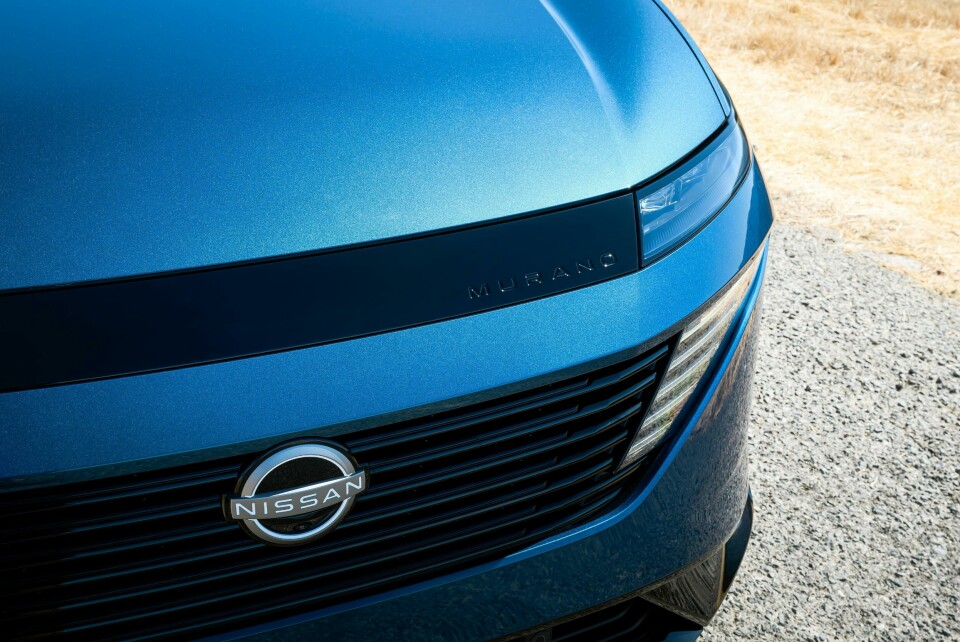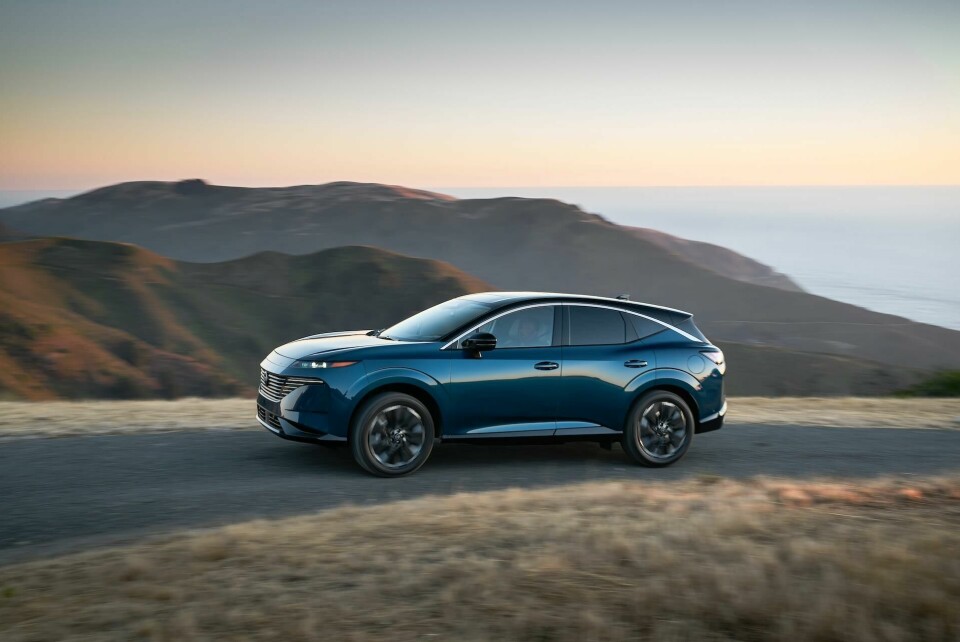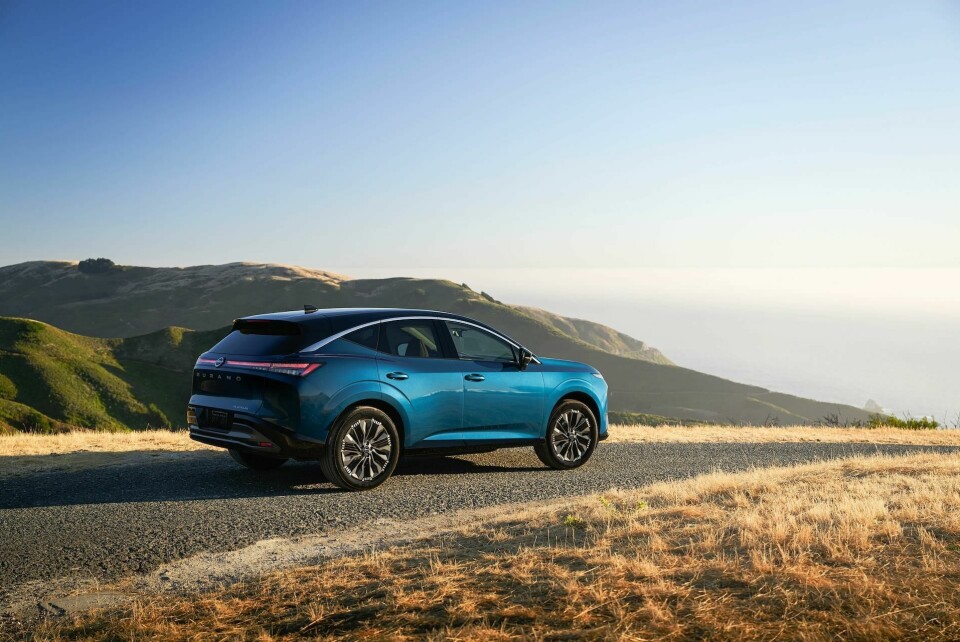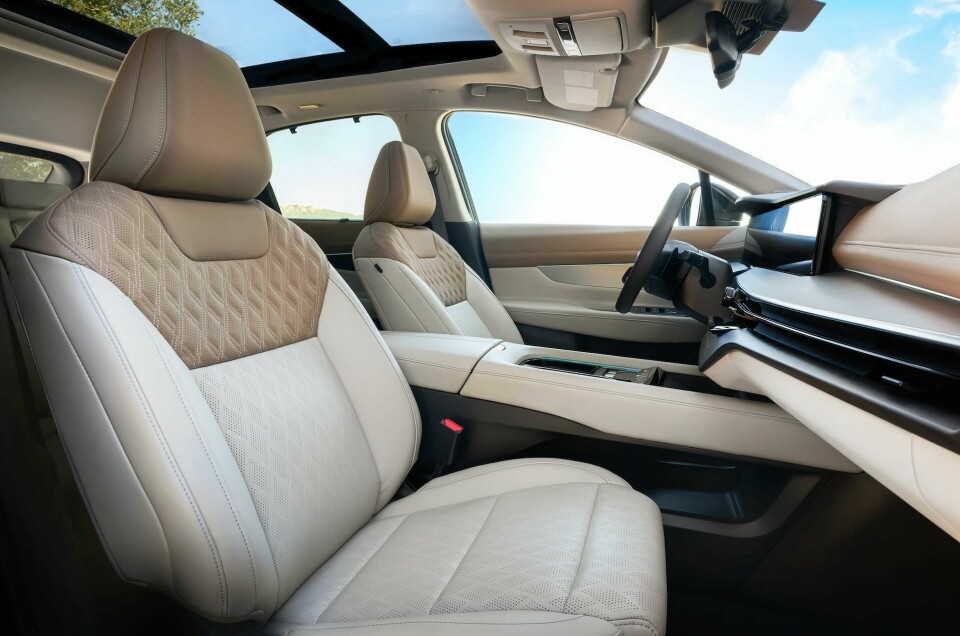
We were determined to create something striking: Giovanny Arroba on the new Nissan Murano
Nissan’s senior design director speaks with CDN about the long-awaited update to the brand’s signature midsize SUV
The new Nissan Murano recently made its public debut at the Los Angeles Auto Show, along with a host of new Nissan products. It has been a brand mainstay for almost two decades, with a bold and dynamic style in contrast to boxier and strictly functional SUVs.
The outgoing third-generation Murano is largely the same SUV as the Murano of ten years ago. That model, the third generation, has some minor facelifts and improvements, but has aged quite a bit in what has been a decade of great change, with lots of technology and design development.
The fourth-generation Murano was considered for a number of radical changes, including an electric powertrain, but consumer surveys indicated that its buying demographic was not amenable to such a radical change. Much of the R&D was then the transferred to the development of the Ariya, which meant the Murano update would be delayed.
But now it is here, and the Murano boasts a new design with a broader stance and new exterior design and a new, more premium-focussed interior. We spoke with Giovanny Arroba, design director at the Nissan Global Design Center.

Car Design News: Let’s begin by reviewing the history of the Murano and its influence at Nissan.
Giovanny Arroba: The Murano was really unlike the rest of the segment: it took the segment in a new direction. Back then SUVs were a little more functionally oriented and boxier.
The Murano entered the market with a sleek, sophisticated body, with 20-inch wheels. It was a statement of modernity. It competed with luxury vehicles well above its class.
We were conscious of that as we reshaped this new Murano and wanted to bring back that premium-ness, the purity, and elevate that sense of elegance. But we were also inspired by the Ariya (which I was responsible for) so we wanted to bring the Murano in line with the Ariya’s “timeless Japanese futurism”. It’s a bit contradictory, those terms – timelessness and futurism – but it is about timeless notions of beauty and bringing those into the future.
We were determined to create something striking
CDN: The Murano has always had a strong mask. Can you tell us about the design of the front face of the new Murano?
GA: The previous Murano had a lot of chrome – it was styled according to Nissan’s design language of the time, but with the new mask, we wanted to employ technology and Nissan’s new expression of V-motion grille. And of course, it’s a bigger car now, almost 3” wider, and we really focused on proportion and stance.
At Nissan, our crossovers and SUVs are not just about the function. We want to bring a sense of sleekness and style to the car.
We wanted to elevate its graphic. We brought in the body-coloured band between the cubic headlights and the functional cooling grille which is flanked by the electrified V-motion grille lights. We wanted to replace the giant chrome grille bring in the modernity of the horizonal sleekness.
CDN: The outgoing generation of the Murano has very strong muscular surfacing. What were the goals for the massing and surfacing of the new generation?
GA: We wanted to bring back the modernity, the purity of the original Murano. We wanted to clean up the car, but keep the dynamics of form. We wanted to keep the dynamic motion and tension in the surfacing and shadow and reflections. It’s shaped with a bit more formal modernity, but still very dynamic.
CDN: The tailgate and rear seem to have received a similar update. Can you tell us about that?

GA: The front we wanted to simplify, make more modern, but no less impactful. At the rear, we wanted to clean it up in a similar way, but again, make it impactful at a glance. We moved the wiper to up under the diffuser, we lowered the license plate and even redesigned to the license plate lighting to be less conspicuous. The result was a clean surface that allows for the light bar – again horizontal – to cleanly stretch across the rear hatch.
Also, the rear three quarter view really shows the new width and stance. Cleaner, more minimal, less visual “noise”, but more impactful. Less noise, more impact. There’s more of an emphasis on the parts that remain.
CDN: Could you talk about the new glasshouse?
GA: In the previous generation, there was a “floating roof,” with a lot of extra plastic finishers necessary to accomplish the effect. We wanted with this new generation to clean up the composition, to have less “noise” but make it a more impactful, big gesture at a glance. The roof and body panels are designed for a two-toned roof, with a broad aluminum arch that springs over the side windows, and suggests a coupé-like form.
The purer, bigger-gestural products tend to stand the text of time
CDN: Looking at the interior, what elements contribute to the new premium feel?
GA: The outgoing car had a quite vertical center stack organisation and it felt somewhat compartmentalised. We really wanted to open it up that space and allow the occupants to be wrapped into this new premium space. Strong horizontal lines and the layering of horizontal elements along the IP and the doors contribute strongly to this, as does the broader windscreen that invites the occupants to turn their views to the horizon.
The traditional gear shifter has been eliminated a new push-button gear selector, again, to open up he interior console and allow for a place to place your smartphone – and that latte. Visually this helps the eye sweep across the cabin, making it seem less compartmentalised.
The CMF team came to us with a three-layer finisher across the IP that added some depth, gradation and colour, along with the satin grain finisher along the horizontal row of HVAC controls, similar to the Ariya.
We worked a lot on this finisher, knowing that it would capture the light, but also reflect it up into the glass. We have a light chamber to work with lighting and reflections and simulated a great deal of lighting situations. We were quite pleased with the result.
[Nissan elaborates: “The finisher uses our in-mold film technology, which consists of printed ink layered on resin before molding” – Ed.]
CDN: Please tell us about the new passenger seats.
GA: We really wanted this beautiful lounge seat, something with wide shoulders and unique stitching to pamper our customers in the construction and features of the seats. Also, color plays a big role. We used Golden Hours colour palettes – warm intense colours contrasting with darker twilight colours. Even the darkest interior is not completely black, but a deep twilight blue. It’s an interior that provides our clients with a sanctuary for travel.

CDN: Were the Ariya and the Murano developed together? They seem to have some similar design features, and seem to have the same “spirit”.
GA: I think you just hit on it with the notion of the same “spirit”. They were conceived in the same spirit of “timeless futurism” and a more formal modernity, though the Murano is definitely the more formal of the two. But yes, they are designed in the same spirit that ties to the renewal and elevation of the Nissan brand and the Japanese sense of craftsmanship, and precision. We wanted to fill each design with an energetic, progressive elegance. We are bringing more premium quality features to our customers, without the premium price point.
We talk a lot about “Nissan-ness” – the dynamics and excitement, sleek and pure – and a little sexiness, but also a zen-like calm in the interiors, a sanctuary.
The purer, bigger-gestural products tend to stand the text of time. The original Murano still feels to me like a modern car. Timeless Modernity. Updating the tech throughout the car, and it could be relevant today. The new Murano has a better proportion and stance and a nice formality, but the heritage is still there.
CDN: Any concluding thoughts?
GA: “We were determined to create something striking,” Arroba said. “At first glance, you want to walk up to it. You want to get in and drive it.”




























